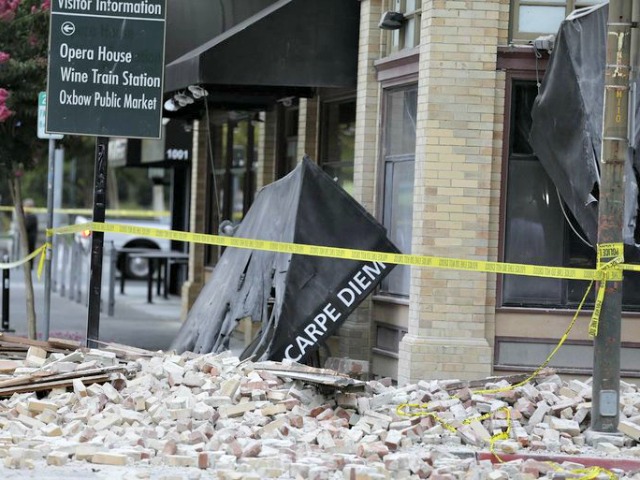A seismologist at UC San Diego asserted that the 6.0 Napa earthquake that struck on Sunday should be a “wake-up call” for the Napa Valley wine industry, which had a substantial amount of inventory destroyed by a relatively mild earthquake.
Tom Rockwell explained that there are active faults that stretch along the Napa valley that “could produce earthquakes that are even larger than this.” The Sacramento Bee reported that wine country is going to have to get pro-active, which they have been reluctant to be so far. Wineries need to let geologists dig trenches on their land to test the soils and assess faults. All of this disrupts the vineyards and comes at a cost, so Rockwell understands their lack of enthusiasm.
“It did a surprising amount of damage, considering it was only a magnitude 6.0,” Rockwell said. Based on the damage done by this quake, a much larger one could be much more devastating, and vineyards will need to be better prepared if a bigger one rattles their cellars.
According to the Bee, the Hayward Fault, which sits aside Napa Valley, is considered the most likely source of a major earthquake in the Bay Area. According to the United States Geological Survey, there is a 31 percent chance a 6.7 magnitude or greater earthquake will hit on the Hayward Fault over the next 20 years.
Of course, this does not bode well for buildings throughout Napa other than the wine cellars. The Los Angeles Times reported that when the earthquake struck Sunday morning, walls crumbled on many buildings in the city, spraying brick and mortar onto the sidewalk and streets of nearby neighborhoods. Bricks that fell down from one building landed on an outdoor café and could have killed dozens if it had happened at 3:20 p.m. rather than 3:20 a.m..
“We can’t keep every single brick in place in many of these older buildings without extraordinarily costly retrofits,” one structural engineer said, who works for the California Seismic Safety Commission. “We can reduce the damage in losses, but not eliminate them entirely in older buildings.”
Retrofitting is expensive, complains Brian Silver, who owns three buildings in Napa. He explained that he has struggled to come up with the money to pay for the necessary modifications, which will cost him $500,000. Silver told the Times that he now has enough money to pay for the required retrofitting. “I’m going to do it as quickly as I can. I was planning on remodeling my house,” he mused, “but I think that will have to wait.”

COMMENTS
Please let us know if you're having issues with commenting.